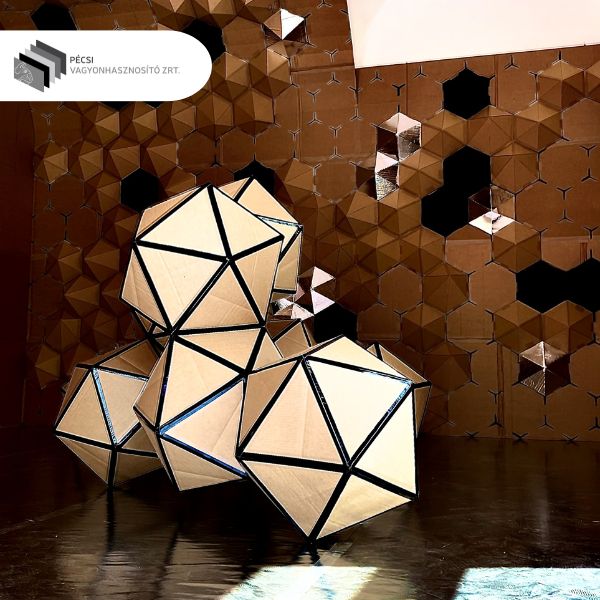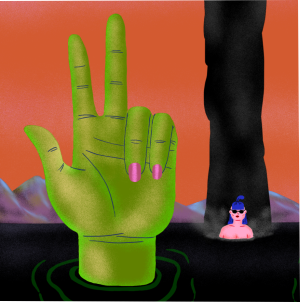
Commercial real estate in a new look
We are unique in that our portfolio includes nearly 300 city centre shops,
offices, shops, restaurants, cafés and catering outlets, and
other properties, which are important and emblematic places of Pécs
is.
We asked László Százados, art historian and co-curator of LOKART, about the preparations, expectations, the situation of contemporary art in Hungary and of course about Pécs.
When did you get involved with LOKART and what was the background?
The first LOCATION at the time only as a judge and panellist, and in the second edition - perhaps SPACE / alternative cosmoses exhibition a year earlier, I joined the work as one of the festival's organisers, thinking along with Valeria Fekete and Zsolt Kozma. I'm not from Pécs, but I have a lot of friends and acquaintances from here or from abroad, I've been here relatively often, I love the atmosphere of the city. As an art historian and editor - dealing with the 60s and 70s, then the 80s and the period of regime change - the significance of the city and its inescapable role in 20th century Hungarian art has been clear to me for quite a long time. All this, in a much broader context (music, film, theatre, architecture), is embedded in the fabric of Hungarian culture, with regional implications and, in many cases, international links. Narrowing the focus again, I consider the work of the Közelítés Artistic Association, founded in the mid-1990s, and the series of events of the Young Contemporary Occupations from the late 2000s onwards, to be important examples to follow. The network and energies of these traditions and experiences, which still exist today, can be activated, or at least can be seen as an important point of reference, of which a very close example is the GraphicPécs 2022international graphic design festival, which combined the role of a university city with the poster tradition, also building on the advantages of the twin-city network.
What is your role in the festival?
Together with Zsolt, in consultation with Valeria, inviting the Hungarian participants, keeping in touch with them, working together: continuously developing and shaping the initial - rather broad and malleable - concept/theme, coordinating this constantly evolving intellectual and physical medium (ideas, visions, desires vs. locations) until the opening of the exhibition.
What do you find most exciting about this job?
The process of collaborative work: exchanging information and knowledge with artists, colleagues and professionals, and accompanying the development of sites, spaces and artworks. Encounters, the building of intergenerational relationships, the creation of mutual inspiration and, perhaps most importantly, the opportunity to create new work. To create the opportunity to be seen: whether it be to put old or long-seen works in a new context, or to 'make public' the documents of a period of experimentation or a gesture of intention to move on. Or simply to juxtapose works that have hitherto been shown only in the capital with works that are representative of the local scene but also internationally, in this case Croatian and French.
What are your expectations for the event?
Going back to the earlier question, what's exciting about this job is also the risk factor: there's the possibility of the unexpected, of things happening, of failures. But there is also the invisibility of the 'countryside' - invisible from Budapest - the uneven dispersion of resources, attention and interest, and the shifting, often seemingly unpredictable, hecticness of cultural consumption patterns in this post-Covid period. In any case, it would be good to lay the foundations locally for an interesting and exciting (visual) arts event for all - artists, organisers, residents and visitors - and for a continuing and sustainable event. At the same time, the contacts generated here, the exhibitions and the works created should put the coordinates of a periodic but regular meeting point on the map, visible beyond the borders of Pécs.
What does contemporary art mean to you and what are your expectations of the funding?
"To show what is", regardless of stylistic, genre or political-ideological preferences, sensitive to current trends and quality. Taking into account the local conditions, to find a possible - but also responsive to changing circumstances - position. To create situations where the breadth of perspectives and interpretations offered - in the context of the opinions, sights and bubbles generated - encourage reflective and critical vision and individual opinion-making. A LOCATION I consider the current edition as a test version, the beginning of a learning process: defining and exploring the framework and possible directions. We need to make the most effective and skilful use of the elements of the exceptional urban potential available to us, by maximising the current possibilities within very narrow limits. Any upgrading will require more time, prior consultation and resources.

We are unique in that our portfolio includes nearly 300 city centre shops,
offices, shops, restaurants, cafés and catering outlets, and
other properties, which are important and emblematic places of Pécs
is.

Back to other blog articles New Taxonomy of Illusions - Animation and Digital Drawing exhibitionJúlia Farkas, Melinda Kádár, Zsuzsanna KreifSound installation by József Iszlai2023.06.21-09.07,

We asked Andrea Dénes, art collector and art patron, one of the jury members of LOKART, about the biennale, the city, its professional background, the jury's criteria and the Hungarian contemporary art scene.
about fine art.